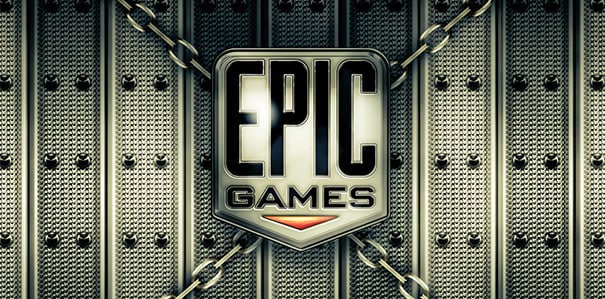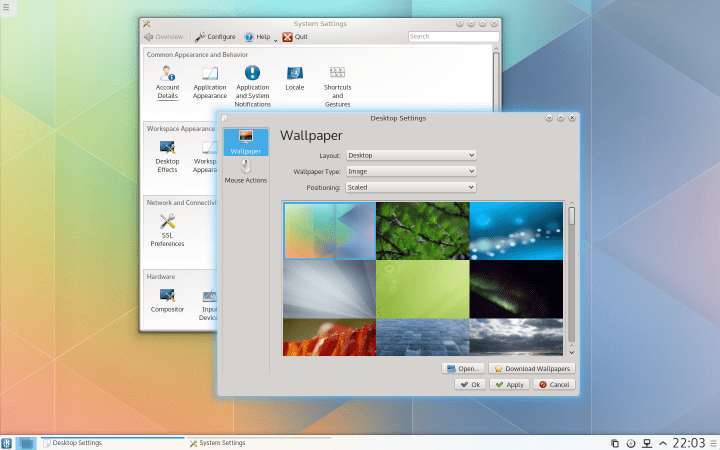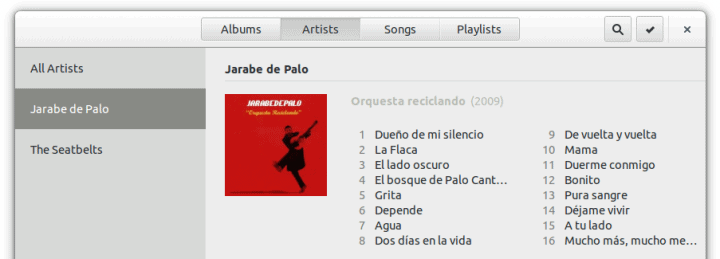What KDE can learn from: GNOME
May 31st, 2014 by Luis Augusto Fretes Cuevas
KDE is my favourite desktop environment but as everything in this life it’s far from perfect. In this series we will simply check what KDE can learn from other desktop environments, starting by KDE’s longstanding “competitor” GNOME. Similarly there’s stuff GNOME and everybody else could learn from KDE. By the very nature of the topic the article may read too negative regarding KDE, but remember is my favourite desktop environment, the only reason it may read negative is because we’re explicitly talking about the things other environments do better. 1. Consistent and beautiful application design Say what you will about… Continue Reading
Crowdfunding free software
May 28th, 2014 by Luis Augusto Fretes Cuevas
Small companies or individuals often have problems raising capital or getting loans and crowdfunding has emerged as the new way for them to get funded. All kind of projects and products from music to smartwatches have gotten the funds they need to make their ideas a reality. Other have failed and yet still managed to raise incredible amounts of money, the biggest example of this being the Ubuntu Edge. It’s fitting that the project that has raised the most money of all crowdfunding campaigns was a project related to free software that also failed. Despite the hope of some, including… Continue Reading
Could Epic Games change gaming development?
May 25th, 2014 by Luis Augusto Fretes Cuevas
Epic games is a company known to the public because of its award-winning and popular video games, the most famous of all belong to the Gears of War series for the Xbox 360. PC and old school gamers, however, probably identify them for their iconic series of first person shooters. The last iteration of Unreal Tournament was released on 2007. Traditionally Unreal Tournament games were developed and released to showcase their latest graphic engine and with Unreal Engine 4 some expected a new entry of the classic series. Something way more interesting happened. Unreal Engine 4: quasi open source Let’s… Continue Reading
What’s next? Plasma Next!
May 23rd, 2014 by Dedoimedo
KDE5 is one of the more important upcoming software packages in the Linux world. There are quite a few reasons why this is the case, and I’d like to emphasize a couple in this opening section. The first, the critical satisfaction factor uncertainty, which comes to bear following the KDE3.5 to KDE4 fiasco. This one has left many a user with a bitter taste, and worse yet, a sense of fear that the familiar and friendly, which they’ve come to love, may be gone in a single moment of binary code fury. The second one is, this is the first… Continue Reading
More or less features?
April 30th, 2014 by Luis Augusto Fretes Cuevas
Many projects and software developers want their applications to be aesthetically pleasing and simple to use. Both imply uncluttered interfaces. Others want their application to be as useful as possible. These two are good goals that most software developers should include in their check-lists. The problem starts when developers and designers confront with the how to accomplish it. Bad reasoning type 1: Less is more We want our program to be simple to use and one less feature means less clutter. If there’s some function that 90% of users don’t actually use then is better to remove it. The problem with… Continue Reading
Review: GNOME 3.12
April 29th, 2014 by Luis Augusto Fretes Cuevas
For a brief period of time GNOME was the princess of desktop environments. The most popular distribution out there, Ubuntu, used it. Distributions perceived as being very professional such as those from Novell or Red Hat, used it. Even the “alternative” distributions like Linux Mint used it. Later with KDE making the transition from 3 to 4, GNOME 2 solidified its position as the darling of desktop environments. And then something happened. Canonical decided to create its own desktop environment, Unity. Linux Mint switched to Mate, a GNOME 2 fork, then they forked the most recent version of GNOME to… Continue Reading
Unity a year later
April 24th, 2014 by Luis Augusto Fretes Cuevas
A year ago I wrote an article about the different directions taken by Unity and KDE respectively. Beyond describing them, I took a very firm stand: Canonical made changes for the sake of change and it was an inferior experience (KDE got its fair share of criticism too). A year later with a shiny new LTS release, I thought it was time to give Unity another chance. Obviously Ubuntu is more than Unity but is the main differentiator between it and other Ubuntu-based distributions. I will split the review in three cliché sections: The good, The Bad and The ugly…. Continue Reading
How light is Netrunner?
March 29th, 2014 by Luis Augusto Fretes Cuevas
Minimum and usable requirements are not synonyms. Recommended specifications should not be confused with usability requirements, recommended specs are are more demanding (they represent the ideal set of components). A usability requirement is the condition in which the system not only installs and more or less works, but can also be used reasonably by other human beings. According to the official documentation, the minimum requirements to run Netrunner 13.12 are: CPU 1.6-GHz Intel Atom N270 RAM 1GB Hard Drive Size 10GB Graphics Card Intel GMA 945 Video Memory 128MB I decided to put this to test. The machine I used is… Continue Reading








